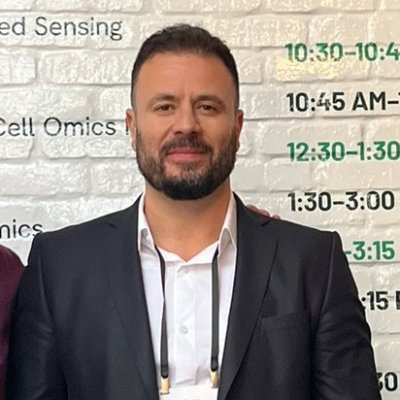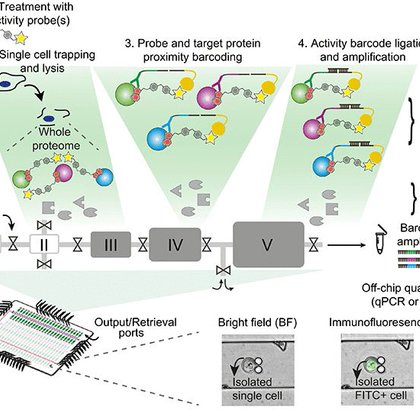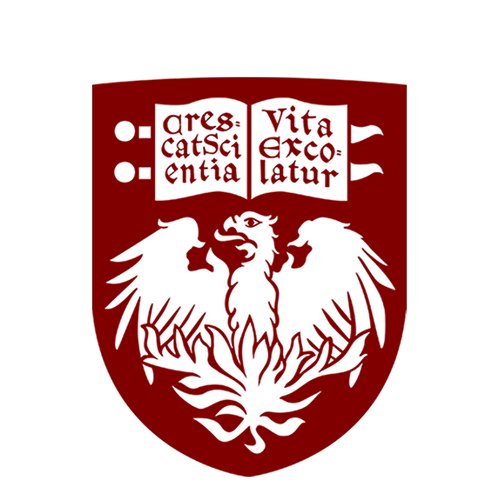
Raymond Moellering
@rmoellering14
Followers
1K
Following
2K
Media
40
Statuses
352
Prof., proteome explorer, baseball fan, entrepreneur, triathlon dabbler, tweets are my own
Chicago, IL
Joined October 2017
Write to your representatives/senators…all that can be done at the moment. There are ideological differences but all (most?) will agree how dangerous this is for our workforce, industry and healthcare infrastructure.
Wow I wish the NIH had been faster processing those grants they made the decision to award back in November and December
0
0
2
I recently took a “glamorous” trip to Bethesda to present our #cancer research @theNCI. I must have missed the poolside bar in the balmy Maryland December weather.
NIH bans travel - I'm surprised no reporter actually investigates how NIH money is used for travel. The public would be appalled. People flying to glamorous cities skipping huge chunks of the conference, obviously because the conference is terrible and boring. Some senior people
1
0
5
> You are a legendary Stanford professor, Irv Weissman. Publish your work on a new cancer-targeting approach, raise $76m right away > Chinese company (Antengene) notices your data later and starts doing the same thing > 5 years later Chinese company is ahead of you, running their
endpoints.news
In 2019, Stanford University professor Irv Weissman and a colleague published a paper that represented a new way to target some aggressive cancers. Shortly after, they did what many researchers ...
37
106
1K
Concerning report on H5N1 case. Reading on the antiviral use shows just how few options we have. Next line after tamiflu is basically amine derivative of adamantane?! We’ve got to figure out how to incentivize this work… https://t.co/T7NtDnJY22
1
1
4
Have to agree with @srikosuri in hiring/interviewing for academic positions but definitely when hiring for biotech. What did YOU do? How did you show leadership and help the team? What were you passionate about? Those are all predictive of success in either arena.
@PracheeAC I somewhat disagree here. I think one of the things we look for is being responsible for shipping something. It could be a publication, but could be other things like codebase (github), communities, et al. Lead author papers take a ton of work that isn’t really glamorous past
0
0
1
Take a break from doomscrolling and read up on everything you ever wanted to know about Tackling Undruggable Targets with Designer Peptidomimetics and Synthetic Biologics. Fun writing this with @ColinSwenson, Guna and Debbie in my lab! https://t.co/nJWJu3GyZY
pubs.acs.org
The development of potent, specific, and pharmacologically viable chemical probes and therapeutics is a central focus of chemical biology and therapeutic development. However, a significant portion...
0
9
50
This living rent free in my head every time I get asked why we are still making molecules and testing them in cellular contexts instead of letting AI do it…
Incredible: AI can predict the winner of the 2024 election. Looks like there will be a few surprises; for example, there's a good chance that Iowa will win Texas.
0
0
6
Spread the news! We are looking for faculty at all levels: Faculty (Open Rank) - Bioengineering and Immunoengineering The University of Chicago: Pritzker School of Molecular Engineering https://t.co/fGDjfsrEM9
1
9
11
0
1
8
Led by @KavyaSmitha , Liv Laxton and colleagues; funded alongside related work by @SusanGKomen @theNCI
1
0
4
Our recent work in automated, single-cell chemoproteomics to profile protein activity signatures in cancer w/ @SavasTay_UChi ‘s lab and colleagues @UChiChemistry @UChicagoPME @UChicagoMed
https://t.co/rIYzPneZmS
science.org
Mapping protein activity with single-cell chemoproteomics uncovers a metastasis-associated activity signature in breast cancer.
1
12
68
Cool study. Intriguing that 3-food affinity can be so significant. Glucose-sensitive insulin with attenuation of hypoglycaemia | Nature
nature.com
Nature - NNC2215 is an insulin conjugate that can reversibly adjust its bioactivity in response to a diabetes-relevant glucose range in vivo.
3
0
9
@UChiChemistry researchers created synthetic molecules halting cancer growth in mice by targeting 'undruggable' transcription factors and shrinking aggressive breast cancer tumors. @rmoellering14 #BreastCancerResearch #BreakthroughInnovation
https://t.co/aMyyzPLzxt
0
2
7
Maybe reviews need to start insisting that westerns are validated by MS? (Jk…kind of 🤷♂️)
The first western blot, from Towbin, et al., 1979 (gels were presented sideways then). Amazing that 45 years later this simple form of data is the subject of many instances of fraudulent image manipulation that have destroyed careers and shaken confidence in biological research.
0
0
2
This builds on methods like BioID, APEX and our previous light-activated proximity profiling in cells https://t.co/HP7oVCK3F5 as well as subsequent work by others using Ab-photocatalyst conjugates (e.g. micromap). Excited to take a native, live-cell and family-focused approach.
pubs.acs.org
We report a novel photoproximity protein interaction (PhotoPPI) profiling method to map protein–protein interactions in vitro and in live cells. This approach utilizes a bioorthogonal, multifunctio...
0
0
0
We identify conserved and unique integrin complex members that change in a cell-type, cell environment and disease state-dependent manner. We also identify AND-gate integrin partners and interaction “barcodes” associated with TNBC metastasis and progression.
1
0
1
Photoproximity profiling of native integrin “social networks” on cancer cells/tissues. We’ve long been fascinated by these important and dynamic adhesion receptors and how they do their job and who they do it with. No Abs or genetic constructs needed!
biorxiv.org
Integrin family transmembrane receptors mediate dynamic interactions between cells and their extracellular microenvironment. The heterogeneous interaction partners of integrins directly regulate cell...
4
8
44
Thanks @nchembio and reviewers for contributions to the paper and @theNCI @TheVFoundation @AmericanCancer and @UCCancerCenter for funding!
0
0
1
We hope this spurs further research into targeting these challenging stress responsive TFs in cancer and advances potential for new development of synthetic gene regulatory agents. Much to do in this expanding space!
1
0
2
blunt tumor growth and suppress metastasis in a syngeneic TNBC model. Notably, we found that STRs, which are a new class of potential therapeutics, were non-toxic and non-immunogenic. This is the first demonstration of activity for a fully synthetic artificial TF in animals.
1
0
1














